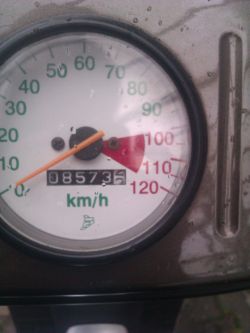>>21348931 .
I have read the R39 provisions in detail.
Interestingly, mopeds should have counters that overestimate by 10% +4 km/h offset, just like in cars.
In addition, the meters on mopeds must not have a scale exceeding 80 km/h.
Meanwhile:

.
This is a 50cc scooter I used to make. The model locked in the worst possible way, that is, structurally in every component, so difficult to unlock. When I rode it, I was surprised to find that it rides like a bike. It's standard for the meters on scooters to overestimate, but I didn't expect it to overestimate so much.
By the meter it was pulling 50-55, max 60 km/h. I checked my speed with the GPS and it turned out that it was going the legal 45 km/h, max. 50 km/h.
Basically, the error of the meter readings exceeds the allowed norm, and the red range on the dial of 100-120 km/h not allowed by the regulations is not even possible with this engine.



